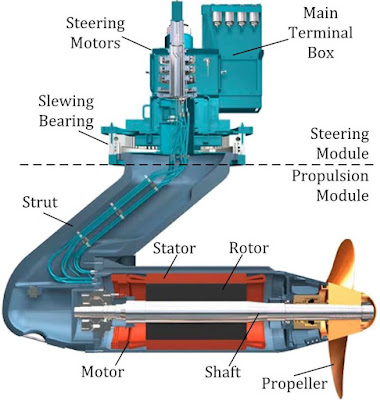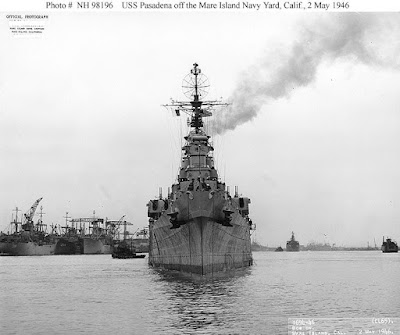Do we have enough ships, currently, to conduct a war with
China? Not even close! Consider that we operated a fleet of some six
thousand ships during WWII. There’s no
way we can fight a war with China with only the 180 or so combat ships we have
today. So, we need to build several hundred
more ships, right? Wrong! We can’t afford that. Well … we can if we’d spend wisely but that’s
not the current reality. Further, we
can’t maintain a fleet of several hundred ships. Heck, we can’t maintain today’s fleet of 180
combat ships! Finally, we can’t crew several
hundred ships despite the fact that we actually did that during the Cold War. So, what do we do? Well, if we can’t build hundreds of ships
prior to a war then the only answer is to build hundreds or thousands of ships during
the war, as we did in WWII.
But – and this is the big but – it takes 5-10+ years to get
a ship built and into the fleet today.
That’s simply not going to work during a war. We can’t wait 5-10+ years for new ships. In comparison, China has demonstrated that
they have several times the shipbuilding capacity and speed that we do. That would seem to suggest that China will,
inevitably, win the naval war simply because they can out-build us. That’s not good.
So, what can we do about it?
Aside from the obvious solutions such as increasing the number of
shipyards and maintenance facilities, which we’ve previously discussed but acknowledged
would be very difficult to do without sweeping regulatory reforms, there is one
other blindingly obvious and easy solution and that is to change the way we
design and build ships.
If our current ship designs and construction practices don’t
allow us to build ships quickly then we have no choice but to change the
designs and practices. However, before
we talk about design changes, let’s first make sure we understand exactly
what’s wrong with our current designs as they relate to construction speed. Yes, we all know that our current designs are
woefully deficient in armor, weapons, sensors, separation, redundancy, etc. but
those don’t really impact ship construction speed. Other aspects of ship design have a much
greater impact on construction speed.
For example,
Materials – We
need to stick with simpler materials from a construction perspective. For example, aluminum welding is a tricky art
and requires a great deal of experience and technique. There are relatively few welders with
expertise in this skill and training of new welders is a difficult and time
consuming task which slows down ship construction time. Sticking with common steel makes more welders
available which speeds up construction time.
Similarly, complex composites and layered materials are
difficult to fabricate, handle, and integrate into construction. For example, the Zumwalt’s giant
superstructure panels (a complex layered wood, resin, and composite design) are
very difficult to fabricate and install.
In fact, the Navy abandoned the material after the first two Zumwalts.
During war, many exotic raw materials will be in short
supply. The current automobile shortage
which is due to the lack of computer chips is a chilling example. When we try to build ships during a war and
face critical shortages of the raw materials used in radars, computers,
sensors, etc., we’ll quickly realize that we should have designed simpler
systems using more common and readily available materials. That exotic moonbeamium nitride radar that
can see through the curvature of the earth and detect a bacteria is great but
it won’t be available in war and a simple mechanical, rotating radar will be a
better choice. We need to redesign our
systems using raw materials we can count on during war.
Let’s stick with common, simple materials, as much as
possible, in our designs.
Complexity – Complex
systems are harder to install and take much more time. For example, the delicate, precise,
time-consuming alignments required for radar array faces and VLS cells preclude
rapid construction. Simpler systems that
can be ‘slapped’ into place would speed up construction. The Ford’s elevators are an example of an
overly complex system that is very difficult (thus far, impossible!) to install
and offers no actual combat benefits and may well be a combat deficiency when
it comes to alignment and repair at sea.
Let’s avoid complexity like a rattlesnake.
Concurrency –
Concurrency has repeatedly been shown to cause construction delays as
previously installed systems have to be removed, reworked, and reinstalled. Large sections of the Ford’s decks have had
to be removed to allow the installation and modification of systems that were
not ready during initial construction.
Concurrency must be completely eliminated.
Size – This goes
without saying but we’ll say it anyway.
The larger a ship is, the longer it takes to build. We need to focus on smaller ships by ending
our idiotic obsession with cramming every weapon, sensor, and system we can
into every ship we build. We need to
build smaller, cheaper, single function ships.
For example, the AAW Burke doesn’t need a flight deck, hangar, helo
support facilities, sonar, towed array, and so forth. Imagine how much smaller such a Burke would
be and how much quicker it would be to build … and it would still be fully
capable of its main role which is AAW.
Let’s build smaller, single function ships.
New Technology - Radically
new systems inevitably require a great deal of time to figure out how to
manufacture and install. For example,
the elevators on the Ford offered no overall improvement in carrier air power
and yet have wrought havoc on construction times. The Zumwalt hull form and superstructure
offer no discernible combat advantages over conventional forms and yet required
a great deal of time to figure out how to manufacture and assemble. The Zumwalt superstructure panels required
the development of entirely new manufacturing techniques and, indeed, the Navy
wound up abandoning the composite resin panels in favor of traditional steel
plates (albeit massive ones!).
Let’s keep new technology in the lab until it’s mature and
can be routinely manufactured, installed, and operated.
Now that we understand the various factors that negatively
impact construction speed and know to avoid them, what positive measures can we
take to increase construction speed?
Prototype – We
need to try out lots of different ship types so that when war needs arise, we
will have already worked out the developmental bugs and will have ready-to-produce
designs sitting on the shelves. I cannot
overemphasize the importance of this. We
must have debugged, ready to produce designs so that we don’t waste time
debugging designs during a war.
Simplify – Nothing
speeds up construction like simplified designs.
The LCS, for example, used a complex combining gear that has been
nothing but trouble and for what? It
offered no improvement in combat capability, just a possible fuel cost saving
by allowing multiple power sources to be used.
The combining gear is larger, more complex, harder to install, harder to
operate, weighs more, and takes longer to build and install. A simplified design would use a single power
source and accept the fuel penalty (who cares about fuel cost savings in war?).
Simplification applies equally to individual systems. For example, the VLS system desperately needs
to be redesigned, not because of any performance deficiency, but because they
are very delicate and difficult to install.
We need a new VLS design/redesign) that is robust and can be ‘slapped’
into place quickly and without requiring exquisite alignment.
Standardize - Weapons,
sensors, and electronics which are, themselves, simplified, need to be
standardized. Having dozens of ‘flavors’
of Aegis software is idiotic. Having
multiple navigation systems is inefficient and, indeed, contributed directly to
the Burke and Avenger collisions and groundings. Consider the number of different types of
radars we currently use: SPY-x, AMDR,
Dual Band Radar, Enterprise Air Search Radar, TRS-xx, SPS-48, SPS-49, SPQ-9,
and so many others. We need to pick a
high end radar and a low end and call it a day.
How many different computer systems do we operate? How many different ship combat software
systems do we operate? And so on. We need to settle on some standards and be
done with it so that we can mass produce the chosen systems and eliminate the
current multitude of different configuration and installations.
Pre-qualify – We
need to have shipyards ready to build standardized designs. After we implement the preceding steps we
need to qualify shipyards by having them build one example of each ship type
they’ll be asked to build to debug and prove out the manufacturing process and
have production lines ready to go. Yes,
this will cost money to maintain idle or very limited production lines but
since when is national security and war production a money making venture? Paying to maintain production lines may seem
inefficient but will be worth every penny when war comes.
Summary
In addition to the many ship construction problems such as
lack of shipyards, shrinking industrial labor pool, insufficient trades
development, regulatory requirements, aged facilities, etc., it is painfully
obvious that our current ship designs, themselves, are a major source of the
construction delays we encounter today.
These designs are overly complex and simply cannot be produced in a
useful time frame during war.
In addition to better designs, we need proven, debugged
designs that are ready to be put into production. This requires an extensive prototyping effort
during peacetime. We need to build lots
of prototypes to develop and debug both the designs and the manufacturing
processes. It is just as important to
debug the manufacturing as the design but this is always ignored.













